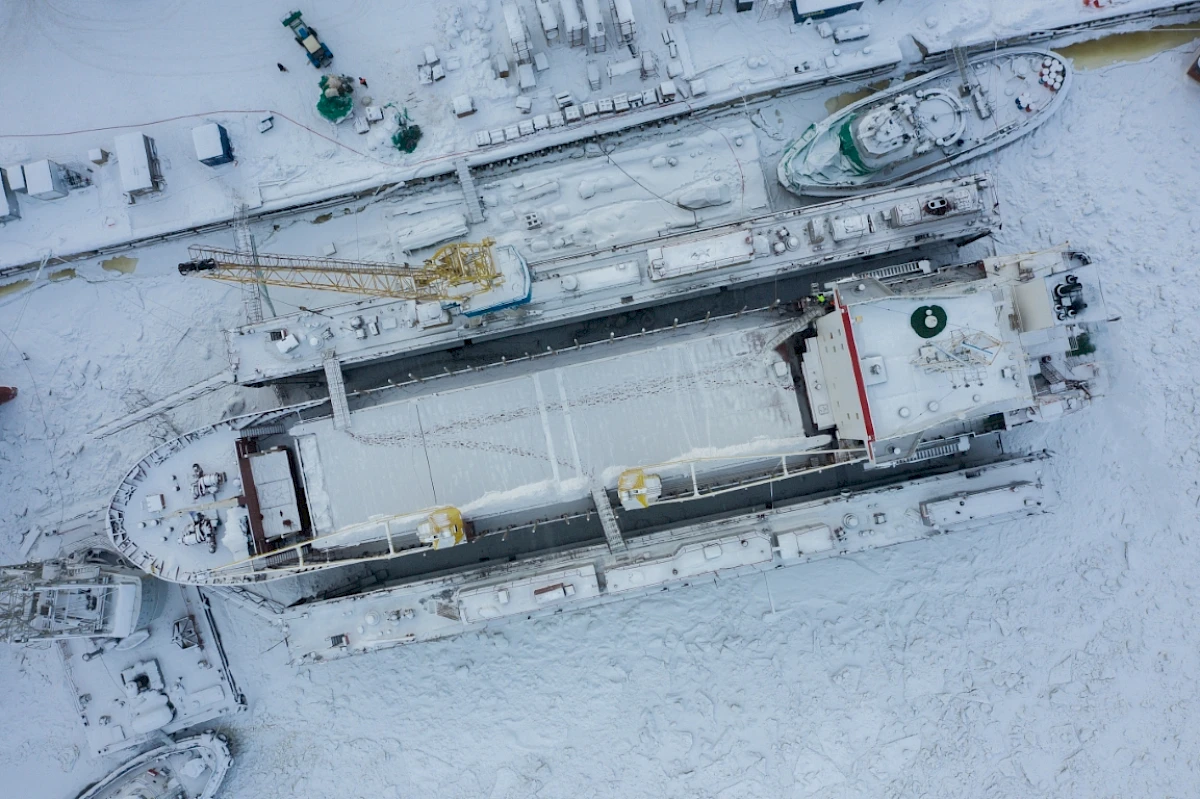Chapter 2: Control of Pollution by Noxious Liquid Substances in bulk (Part IIA)
Chapter summary:
In Arctic waters any discharge into the sea of noxious liquid substances (NLS), or mixtures containing such substances, shall be prohibited. Operations in Polar Waters, in accordance with MARPOL Annex II, must take into account procedures for noxious liquid substances, or mixtures containing such substances, which must be documented in the Cargo Record Book, the Manual, and the shipboard marine pollution emergency plan. See full text of Chapter 2 below and additional guidance.
Additional Guidance for Chapter 2 (Part II-B):
There is additional guidance for ships constructed on or after 1 January 2017. See full text of additional guidance.

Submissions
Hyperlink: IMO Polar Code
Follow this link for DNV GL’s guide to the Polar Code Document ‘Maritime Polar Code: Understand the Code’s requirements to take the right steps for smooth compliance’. For Part IIA, Chapter 2, see page 30.
See also:
Hyperlink 1: https://1bps6437gg8c169i0y1drtgz-wpengine.netdna-ssl.com/wp-content/uploads/2019/06/MEPC-72-INF.7-An-assessment-of-ballast-water-treatment-to-protect-Arctic-waters-FOEI.pdf
This is an assessment of ballast water treatment to protect Arctic waters. This document offers in the annex a comprehensive analysis of shipboard ballast water management system performance, based on available data.
Hyperlink 2: https://1bps6437gg8c169i0y1drtgz-wpengine.netdna-ssl.com/wp-content/uploads/2019/06/MEPC-73-INF.24-Vessel-biofouling-and-bioinvasions-in-Arctic-waters-FOEI.pdf
This is a paper on vessel biofouling and bioinvasions in Arctic waters. Friends of the Earth offers an independent report, set forth in the annex, that provides findings and recommendations concerning vessel coatings and the protection of Arctic waters from bioinvasions.
Hyperlink 1: The Polar Code: A Regulatory Interpretation Guide
This document provides Loyd's Register guidance on all aspects of the Polar Code (chapter by chapter). For Part IIA Chapter 2, see pages 81 to 82.
Hyperlink 2: Meeting the Polar Code on 1 January 2017: Guidance for Existing Ships (Part IIA)
This document includes information on what steps operators need to take to ensure compliance when operating in polar waters on or after 1 January 2017, when the Polar Code entered into force.
Lloyd's website
Hyperlink 1: Northern Sea Route – Best practices and Challenges (2017)
For Chapter 2, see pages 3-4, and 14-15.
Hyperlink 2: Offshore Vessel Operations In Ice and or Severe Sub Zero Temperatures in Artic and Sub Artic regions (2014).
The purpose of this paper is to provide guidance to operators and charterers of offshore support vessels employed for use in areas impacted by ice or severe sub-zero temperatures with the aim of encouraging high standards of safety and environmental protection for those operating in Arctic and Sub-Arctic regions.
Hyperlink: https://cgmix.uscg.mil/MARPOL/Default.aspx
The purpose of the Coast Guard Maritime Information Exchange (CGMIX) website is to make Coast Guard maritime information available on the public internet in the form of searchable databases. For Ships Operating in the US Arctic and Near Arctic the CGMIX Public Database includes a link to MARPOL Servicing Facilities.
This online searchable database contains a listing of all U.S. Ports and Terminals holding valid MARPOL Certificates of Adequacy (COAs). Ships operating in the Arctic are subject to additional restrictions relating to discharges of Annex I Oil/Oily residue, Annex II Noxious Liquid Substances, Annex V Garbage including food waste, and Annex VI Ozone Depleting Substances and Stack Scrubber residues. U.S. Ports and Terminals are issued Certificates of Adequacy (COAs) as evidence that their facilities meet the requirements of Annexes I, II, and V of the International Convention for the Prevention of Pollution from Ships (MARPOL).
Adequate port reception facilities (PRF) at Arctic and near Arctic ports and terminals are meant to ensure ships can comply with enhanced restrictions on discharges from ships to the sea outlined in the Polar Code. US MARPOL regulations are further detailed in 33 CFR Part158. http://www.access.gpo.gov/nara/cfr/waisidx_06/33cfr158_06.html
Additional resources include: -The World Port Index published by the (US) National Geospatial Agency which provides Marine Safety Information on ports and terminals around the world. This publication gives the location, characteristics, known facilities, and available services of a great many ports and shipping facilities and oil terminals throughout the world and can be downloaded as a PDF document. The data is arranged geographically and is keyed to the applicable Volume of the Sailing Directions and shown on a chart. https://msi.nga.mil/Publications/WPI
The IMO's Global Integrated Shipping Information System (GISIS) which includes databases on pollution prevention equipment for ships and MARPOL port reception facilities. The public, searchable databases are arranged by Member States (including all eight Arctic Council states) and provide contact information for ports and terminals including those in Arctic regions. Information on ships waste management in the form of IMO Guidance can be downloaded from the website for ships and PRF operators. The guidance while not specific to Arctic shipping will be useful for ship operators planning on voyaging in Arctic or near Arctic waters. (MEPC.1/Circ.834.Rev.1) in English, French and Spanish. GISIS Data Base: https://gisis.imo.org/Public/Default.aspx
Guidance (Free Download from the GISIS site): https://gisis.imo.org/Public/Shared/Public/Download.aspx?FileType=UnsecuredFile&FileCode=PRF-GUIDE
PART IIA: CHAPTER 2 – CONTROL OF POLLUTION BY NOXIOUS LIQUID SUBSTANCES IN BULK: Full Polar Code text
As adopted from IMO - Full Polar Code text
2.1 Operational requirements
- 2.1.1 In Arctic waters any discharge into the sea of noxious liquid substances (NLS), or mixtures containing such substances, shall be prohibited.
- 2.1.2 Operation in polar waters shall be taken into account, as appropriate, in the Cargo Record Book, the Manual and the shipboard marine pollution emergency plan for noxious liquid substances or the shipboard marine pollution emergency plan as required by MARPOL Annex II.
- 2.1.3 For category A and B ships constructed on or after 1 January 2017, the carriage of NLS identified in chapter 17, column e, as ship type 3 or identified as NLS in chapter 18 of the International Code for the Construction and Equipment of Ships Carrying Dangerous Chemicals in Bulk in cargo tanks of type 3 ships shall be subject to the approval of the Administration. The results shall be reflected on the International Pollution Prevention Certificate for the Carriage of Noxious Liquid Substances in Bulk or Certificate of Fitness identifying the operation in polar waters.
 Arctic Council Working Group
Arctic Council Working Group